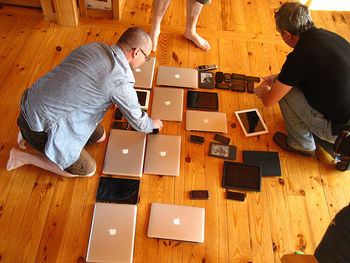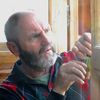Trends in education
| Learning and Teaching in Practice | |
|---|---|
| Module 10: Planning and implementing learning | |
| Trends in education | Introduction | Pedagogy | Technology | Summary |

| Education is always changing that is the only certainty.
In this topic we will look at future predictions for learning and teaching (pedagogy) as supported by educational technology. A key resource is the Horizon report prepared by a panel of international experts in education, technology, and other fields.
|
- Noam Chomsky speaking on the Purpose of Education
This is based on his presentation at the Learning Without Frontiers conference. He says, "the purpose of education is to help people learn for themselves"..." do you train for passing tests, or do you train for creative inquiry?"
It is a wise and philosophical assessment of the state of education today. He advocates for "a lively cultural educational system, which is geared towards encouraging creative exploration, independence of thought, willingness to cross frontiers, to challenge accepted beliefs…. If you don’t have that, you’re not going to get the technology that could lead to economic gains.” See if you agree with his views. Is technology for learning really like a hammer?
- What do we mean by trends?
Teachers, to be effective, need to stay informed about the trends, in both pedagogy and technology, and be confident about trying new approaches. A good place to start exploring current trends is by viewing the presentation: Navigating Digital landscapes by Grainne Conole, who visited Otago Polytechnic in October 2013.
Technologies such as mobile devices, ePortfolios, and social media (Web 2.0 tools and approaches) (e.g., blogs, twitter, wikis and media sharing sites) are now relatively familiar, and are being used more and more. The Horizon report (2014) underpins this topic so please use this resource as the starting point for your explorations.
For this topic you are asked to design a learning activity using a ‘trend’ technology. Since this is a huge area, some resources are suggested, but you need only focus on one specific area in your explorations. For example, mobile devices, or ePortfolios or social media. The technology you choose may be something from the Horizon report, or the other types mentioned here.
| Brett has noticed that all his carpentry students carry a smartphone so he wants to make the most of this opportunity.
He asks them to set up visual ePortfolios using applications where they can share their work and give each other feedback. He wants to trial some different media sharing platforms - Picassa, Facebook and Google+ and Evernote. Brett provides support for each platform and gets them using each one for two weeks before trialing the next one. The students are asked to take images of the skills they are learning and upload them to the various sites. This means they have to work in pairs or groups and help each other. They have no trouble taking pictures when on campus working on the building project but for safety reasons using cellphones on construction sites is not permitted.
|
| Emila is trying to encourage her students to search for resources that they can share. She has told her nursing students about the Directory of open access journals and two media sharing applications for sharing digital information. One is called Zotero - a tool that enables research to be collected in a "single, searchable interface" in several formats, and the other is Delicious - a social bookmarking site where web links can be collated.
The Otago Polytechnic School of Nursing journal is Emilia's contribution to a shared scholarship. She has worked with an Information Technology specialist in her organisation to build this open online journal so that students can showcase their work. The articles are in several formats - pdf, html and audio - and students can download them to various mobile devices to read or listen. Emilia is gathering evaluation data to ascertain how students are accessing the journal. This is a fabulous opportunity for her students to get global recognition for their work, and it is great for the organisation's reputation.
|

